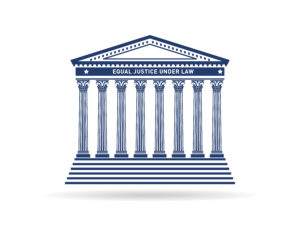Mirroring The Justices’ Styles
Sophisticated writing software with AI components can now tell you how to write like particular judges by engineering writing that mirrors stylistic features of the judges’ writings.

Writing style is clearly important to the Supreme Court justices. Not only are the justices cognizant of the writing styles in briefs, but they are also attuned to the writing styles of other judges and justices. Justices past and present discussed this and other matters in interviews with legal writing specialist Bryan Garner for the Scribes Journal over a decade ago. Some of the key takeaways from the justices were:
Roberts

Happy Lawyers, Better Results The Key To Thriving In Tough Times
“…Henry Friendly was a brilliant writer and had a way of exposition that just revealed the thought and decision process. If you ever pick up one of his opinions, he walks you exactly through how he reached the result. He says you begin with this, whether it’s the language, and it raises this concern, and you pick up this case, and he walks you through, and it’s very revealing and very clear. Justice Rehnquist, for whom I clerked — to some extent a very different writing style, but a crisper diction to his language, if that makes sense, and the written word, and yet the same clarity — also taught me a great deal about writing.”
“As a lawyer, you need to know your audience, and if you know there’s a word or a phrase or style of grammar that’s going to annoy your reader, you want to make sure you don’t put it in.”
Scalia
“Maybe that’s a peculiar part of my own style, but I don’t think you’ll often find sentences of mine that begin with However…”
Sponsored

Generative AI at Work: Boosting e-Discovery Efficiency for Corporate Legal Teams

Curbing Client And Talent Loss With Productivity Tech

Law Firm Business Development Is More Than Relationship Building

Law Firm Business Development Is More Than Relationship Building
Kennedy
“The purpose for the opinion is to convince, ultimately. The only authority our Court has is the respect that’s accorded its judgments, and that respect is based on what we write. So writing is of immense importance.”
“As a consumer of what judges write: in all my years as an advocate for the ACLU, when I constantly read judicial decisions relevant to the case I was briefing; as a law teacher writing an article that requires reading a massive decision. I try to write an opinion so it will be what I would have liked an opinion to be when I was a law teacher or an advocate.”
Ginsburg
Garner: “Have there been any writers outside law who’ve been major influences on your style apart from your own teachers, Cushman and Nabokov?”
Sponsored

AI Presents Both Opportunities And Risks For Lawyers. Are You Prepared?

Happy Lawyers, Better Results The Key To Thriving In Tough Times
RBG: “I can’t say that there’s a direct relationship between Jane Austen’s novels and my writing. Or Tolstoy’s.”
Sophisticated writing software with AI components can now tell you how to write like particular judges by engineering writing that mirrors stylistic features of the judges’ writings. This raises a few interesting questions. First, what do we mean by writing style? Style is a very general concept that encompasses many dimensions. Measuring style is somewhat subjective and somewhat objective. There are features of style which most writers would agree on, whether they be word choice, sentence length, word relationships, etc. Which ones are more and less important, and how we measure them is somewhat left to the eye of the beholder.
If justices think they write well (I assume most do), and they want well written submissions from attorneys, then attorneys might gain something by writing in the style of the justices. A roadblock to this approach though is that there are nine justices, each with their unique style. Usually around one-third of the Court’s opinions are unanimous and even these decisions often have separate concurring opinions. At the end of the day, it is tricky to pick the justice that will likely author the majority opinion of any given case, especially at the point of drafting the brief on the merits.
Still some attorneys mimic the style of the Court’s majority authors better than others…
Methods:
I have seven different features of style that I describe below. I used Python to measure each of these dimensions with the briefs for the arguing attorneys for the merits parties (not amici) for each case taken on cert during the 2023/2024 Supreme Court Term. I then looked at how well these briefs mirrored the majority opinions in these cases along the same dimensions. After calculating these brief/opinion comparisons across the seven dimensions I generated an Index (Style) Score for each brief with lower index numbers relating to briefs that were stylistically more proximate to the majority opinions in these cases. The Scores ranged from 8.4 to 220 with a mean of 61. Each of the measures discussed below was weighted equally in deriving the Index. Here are the measures:
Average Sentence Length
The average sentence length is a key measure for assessing the complexity and readability of a text. It captures the typical number of words used in a sentence, giving insight into the density of information and potential difficulty level of the language.
To measure average sentence length, all the sentences in a text are first identified, and the number of words in each sentence is counted. The total word count of all sentences is then divided by the number of sentences, yielding the average sentence length.
Type-Token Ratio (TTR)
Type-Token Ratio (TTR) is a measure of lexical diversity, capturing the proportion of unique words (types) to total words (tokens) in a text. A high TTR indicates greater lexical variety, suggesting that the author uses a wide range of vocabulary, which can be associated with an advanced or nuanced writing style.
To measure TTR, all unique alphabetic words are counted and divided by the total word count in the document.
Trigram Counts
Trigram counts measure the frequency of consecutive three word pairs in the text. These provide a deeper look at word pairings, revealing common phrases or stylistic patterns that contribute to the flow and coherence of the writing.
To measure these counts, the text is divided into overlapping word trios, and each trio is recorded. The frequency of each unique trigram is then counted.
Average Clause Length
Average clause length reveals the complexity of sentence structures within the text. Longer clauses often reflect more sophisticated sentence construction, suggesting a higher density of information or ideas, while shorter clauses tend toward clarity and simplicity
Clauses are defined by punctuation markers, such as commas or semicolons, which often separate individual clauses within sentences. By calculating the number of words in each clause and averaging these counts, this metric provides an average clause length.
Subordination Ratio
The subordination ratio indicates the frequency of subordinate clauses relative to total clauses, which is a marker of syntactic sophistication. Higher ratios reflect more complex sentence structures with embedded subordinate clauses, a common feature in academic, legal, and formal writing.
Subordination is measured by identifying subordinating conjunctions (for example “although,” “because”) within the text. Each conjunction signals a subordinate clause, which is then tallied. The ratio is obtained by dividing the count of subordinate clauses by the total clause count.
Modal Verb Ratio
Modal verb ratio examines the presence of modal verbs, which convey degrees of possibility, necessity, or intention (for example “might,” “must,” “could”). A high frequency of modal verbs can imply cautious or hypothetical language, while a low frequency may suggest definitive statements.
Modal verbs are counted by matching each word in the text against a predefined list of modal verbs. Each occurrence is recorded, and the sum is divided by the total word count to determine the modal verb ratio.
Nominalization Rate
Nominalization rate assesses the use of nouns derived from verbs or adjectives (for example “discussion” from “discuss”). High nominalization rates can create a dense, formal style, as nominalizations make language more abstract and informationally packed.
This rate is calculated by counting nouns derived from verbs or adjectives, excluding pronouns. The total count of these nominalizations is divided by the word count to find the nominalization rate.
Findings:
The distributions for each of the measures aside from trigram ratios (which are more difficult to show in distribution form due to the complexity of matching the trigrams in the brief with the trigrams in the opinion) are given below with the mean value along each dotted line:


Which justices were most accurately mirrored? Here is the graph of average Index Score by justices with the lower scores equating with more closely mirrored opinions:

Here we see that Alito’s style was mirrored with more accuracy than the rest of the justices while Sotomayor’s style was mirrored least effectively.
The next graph shows the top 15 instances of lowest Index Score (most closely mirrored) opinions by attorney for the past term:

Paul Clement is the only attorney in the top 15 lowest scores more than once. Several of the attorneys are currently in the Office of the Solicitor General (OSG) including the lowest scoring attorney, Curtis Gannon, for the brief in Department of State v. Muñoz. The ways these attorneys achieved these scores though are quite different based on these dimensions as the graphs below show.

Concluding Thoughts
If one were to come up with a hypothesis of what to expect before generating these measures, OSG attorneys scoring low (more closely matching) would be a strong initial hypothesis because of their regular interactions with the justices in cases argued each term. Paul Clement and Noel Francisco, who is also on the list of the lowest 15 scorings briefs, are both former SGs, also indicating the importance of the OSG experience in writing briefs that mirror the justices’ styles.
Still, there is a lot of randomness and luck in achieving a low Index Score. If you write more like one justice, you may write less like another. These things have to match up in order to have a brief that closely mirrors the style of the majority opinion. With that said, some attorneys were more adept at achieving these scores than others, and the clusters, especially related to the OSG are telling.
Adam Feldman runs the litigation consulting company Optimized Legal Solutions LLC. For more information write Adam at [email protected]. Find him on Twitter: @AdamSFeldman.







